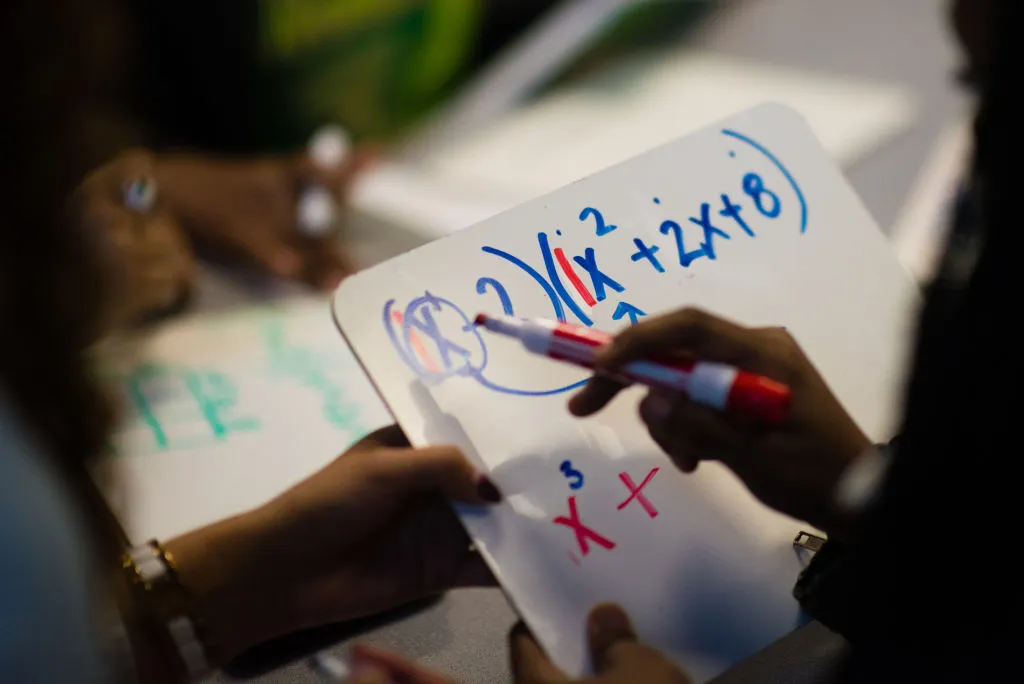
In recent blogs, we’ve spotlighted the importance of intentional knowledge building, and, specifically, purposeful lesson launching and explicit vocabulary instruction. We know there is need: recent nationwide NAEP reading results shouldn’t be overlooked – and while there has been significant progress to date in the Science of Reading movement, it has been mainly in the spread of research-backed phonics instruction, with less attention paid to other aspects of that same science, notably the work of supporting student comprehension of complex texts by building background knowledge.
To live out this mission, leaders and teachers must start with a vision for their students’ intentional and coherent knowledge progression. Today, we’ll look at how the Florida state standards are designed horizontally and vertically to help us do exactly that.
Horizontal Standards Alignment: Knowledge Building at the Grade-Level
Horizontal alignment refers to the practice of ensuring that students in the same grade level have consistent and coherent learning experiences – and Florida educators can leverage the state standards to achieve this end.
Let’s take an example in second grade. If we look first to Social Studies, Florida’s “Civics & Government” strand includes the standard, “Foundations of Government, Law and the American Political System,” which calls on students to be able to explain how the U.S. government protects the liberty and rights of American citizens (image below).
We can see horizontal alignment if we also look to the B.E.S.T. English Language Arts standards text list, where we find the following in second grade:
A second grade literacy teacher, clued into the power of leveraging students’ background knowledge to support new learning, may select “The Congress of the United States,” or “We the Kids: The Preamble of the Constitution of the United States” as the anchor text for a lesson on identifying and explaining text features – rather than “The Coastal Dune Drama” or “The True Story of Harriet Tubman” which are also aligned to that same standard but (potentially) unrelated to her students’ prior knowledge – because the more we know, the more we can learn.
So how can leaders help their teachers maximize this built-in alignment? Ensure a “knowledge share” is part of grade level meetings, PLCs, or other common planning time. Within the established protocol, we recommend adding a section in which teachers:
- Whip Around Upcoming Content: Each teacher shares upcoming topic(s)/text(s) covered in their class and asks: “Have students encountered related knowledge in another content area? What are the key terms and ways this knowledge was communicated?” (For elementary teachers teaching multiple subjects, having each “own” a content area may be helpful to ensure there’s depth and efficiency in this work.)
- Revise Lesson Launch: Add activation of knowledge question(s) into your lesson launch based on outside courses.
- In the above example, when Congress is introduced in Language Arts, the teacher may initiate the reading with a questioning sequence like, “You recently learned about the branches of government in Social Studies. What are the three branches and their roles? Jot them first on your paper. Now turn and discuss with your shoulder partner, and let’s bring it back. Name one branch, [student]…The largest part of the legislative branch is Congress. What are the two main branches of Congress? What are some of Congress’ responsibilities?”
Knowledge Building at the Subject-Level
Educators should also look at the standards vertically to bring knowledge to life for students. Let’s illustrate with the concept of “solving for unknowns” in math.
Third grade standards call on students to solve 1 and 2 step real world problems involving any of the four operations with whole numbers. Take this example:
| A group of students are playing soccer during lunch. How many students are needed to form four teams with eleven players each and have two referees? |
Here, the “unknown” students have to solve for is the number of students needed – which they can determine through basic multiplication and addition:
How does this evolve in future grade levels?
In sixth grade, students must write and solve one-variable multi-step linear equations – such as 4(2x+3) = 4.
Here, the unknown isn’t on the other side of the equation as it was in third grade – it’s “x.” While not too challenging, the solution here requires more of students: distributing, balancing equations to isolate the variable – and is more than two steps:
A teacher well-versed in vertical alignment understands how to draw the connection that students are still solving for a single unknown quantity– just as they did in third grade! The conceptual addition is that now they must isolate the unknown on one side, instead of starting with it isolated already.
Students’ ability to solve for unknown quantities doesn’t end in sixth grade and instead grows in procedural and conceptual complexity through high school. Take a final example from Florida’s Algebra standards: Write and solve a system of two- and three-variable equations and inequalities that describe quantities or relationships. As part of this standard, students might be asked to solve the following system of equations, 2x + y = 5 and x – 3y = 1. They could do this in several ways, including the following:
Again, if attended to, the B.E.S.T. standards confer this progression to educators, not only in solving for an unknown, but also in introducing new number types, operations, and progression of equations – to name just a few others.
To leverage the power of background knowledge for students, instructional leaders must recognize this progression and create the enabling structures to help their teachers recognize it, too. This can happen via thoughtful department meetings, that, in particular, must support teachers new to the profession, school, or subject – who either won’t know to look or won’t have the time to look beyond the scope of their syllabus as part of their intellectual preparation.
With that clarity, teachers can then enhance their questioning, during lesson launch or discourse moments, to push connection:
- Lesson Launch:
- “Today, we’re going to introduce a new concept that will stay with us for the rest of our careers as mathematicians: the concept of the variable. What’s neat here is that you’ve already been using variables in your problem solving – you just didn’t know it! A variable is a symbol, usually a letter, representing an unknown quantity. So let’s say you were solving 42 x 5. Here’s how you could write this using a variable:
42 x 5 = a. “
- Based on your prior knowledge, what do you think “a” stands for here? Turn and talk.” [answers might include – the answer of 42 five times, or 210. If students say “the answer,” push them to be more specific to help show that it’s a specific value]
- During Discourse:
- If you notice Algebra students struggling with the two variables in a system of equations: “Remind us: How do we solve for a single variable, as in a problem like 4(2x+3) = 4? [answers should include something about isolating a variable]
- “Let’s look at Jose’s paper to see how he is still using the strategy of isolating a variable to solve a system of equations. Evaluate his work…now turn and discuss with a partner…and let’s discuss” or “How might we use that same strategy with two variables? Stop and jot first…then turn and discuss with a partner before we share out as a group”
So push your teachers to recognize – and leverage – the horizontal and vertical alignment already embedded in our standards. You’ll immediately see the difference, for a well-stocked mind holds onto new knowledge and engages in deep thinking in ways that lead to success in school and love of learning.
